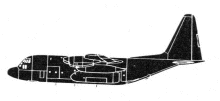Incident Overview

Description
A Cessna 208B Grand Caravan, operating on Fly-SAX flight 102 from Kitale to Nairobi, Kenya, impacted a mountainside, killing all ten occupants. The aircraft departed Kitale Airport at 16:05 hours and climbed to the en route altitude of FL110. The flight was conducted in IMC with low clouds along the entire route. It was cleared to maintain FL110 to navigation fix AVENA to be able to conduct an approach and landing on runway 24 at Nairobi-Jomo Kenyatta International Airport. According to the AIP approach chart, IFR traffic should reach AVENA at FL150. However, there was an undocumented practice for controllers to clear IFR flights below the minimum sector altitude Subject to Own Terrain Clearance The aircraft continued towards the Aberdare Ranges with mountain peaks above 11000 feet. At 17:02 the aircraft impacted 38 feet below the top of the vertical cliff on Elephant Hill. The wreck was located on the morning of June 7 at an elevation of 11200 feet. Probable Cause The Aircraft Accident Investigation Department determines the probable cause(s) of this accident to be: The flight crew’s inadequate flight planning and the decision to fly instrument flight rules (IFR) at an altitude below the published Minimum Sector Altitude in the Standard Instrument Arrival Chart under instrument meteorological conditions (IMC), and their failure to perform an immediate escape maneuver following TAWS alert, which resulted in controlled flight into terrain (CFIT). Contributing Factors: 1. Contributing to the accident were the operator’s inadequate crew resource management (CRM) training, inadequate procedures for operational control and flight release. 2. Also contributing to the accident was the Kenya Civil Aviation Authority’s failure to hold the operator accountable for correcting known operational deficiencies and ensuring compliance with its operational control procedures. 3. There was no requirement for crew to be trained in CFIT avoidance ground training tailored to the companys operations that need to address current CFIT-avoidance technologies. 4. Use of non-documented procedure and Clearance by the ATC to fly below the published minimum sector altitude. 5. Lack of situational awareness by the radar safety controller while monitoring flights within the radar service section.
Source of Information
https://www.tuko.co.ke/275958-plane-flying-kitale-jkia-missing-government-launches-search.html#275958https://www.tuko.co.ke/275958-plane-flying-kitale-jkia-missing-government-launches-search.html#275958Primary Cause
Inadequate flight planning, failure to perform an immediate escape maneuver following TAWS alert, and the lack of a proper CFIT avoidance maneuver, all stemming from inadequate CRM training, operational control procedures, and regulatory oversight.Inadequate flight planning, failure to perform an immediate escape maneuver following TAWS alert, and the lack of a proper CFIT avoidance maneuver, all stemming from inadequate CRM training, operational control procedures, and regulatory oversight.Share on:




